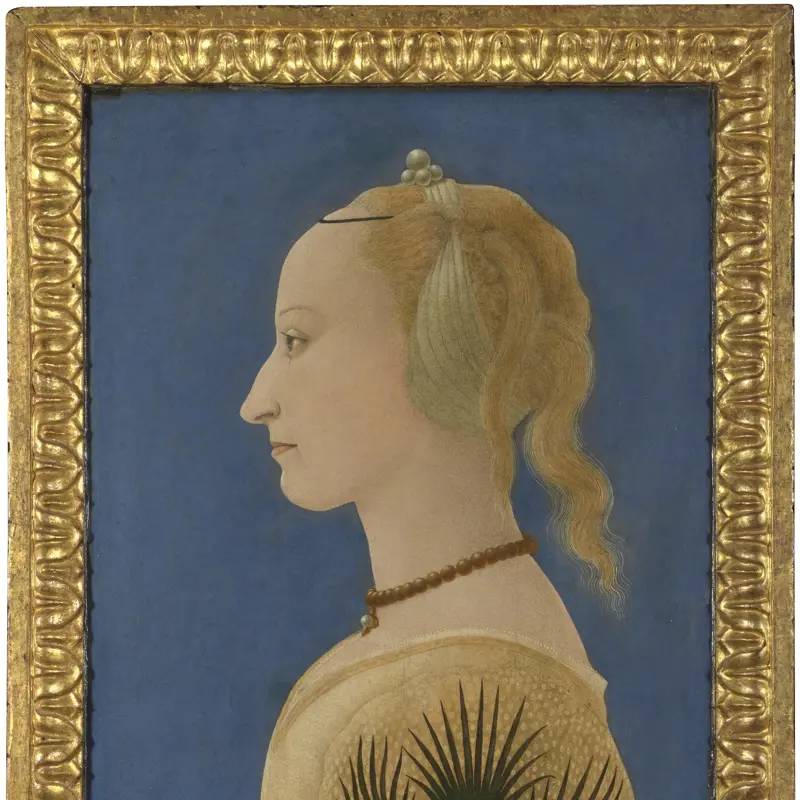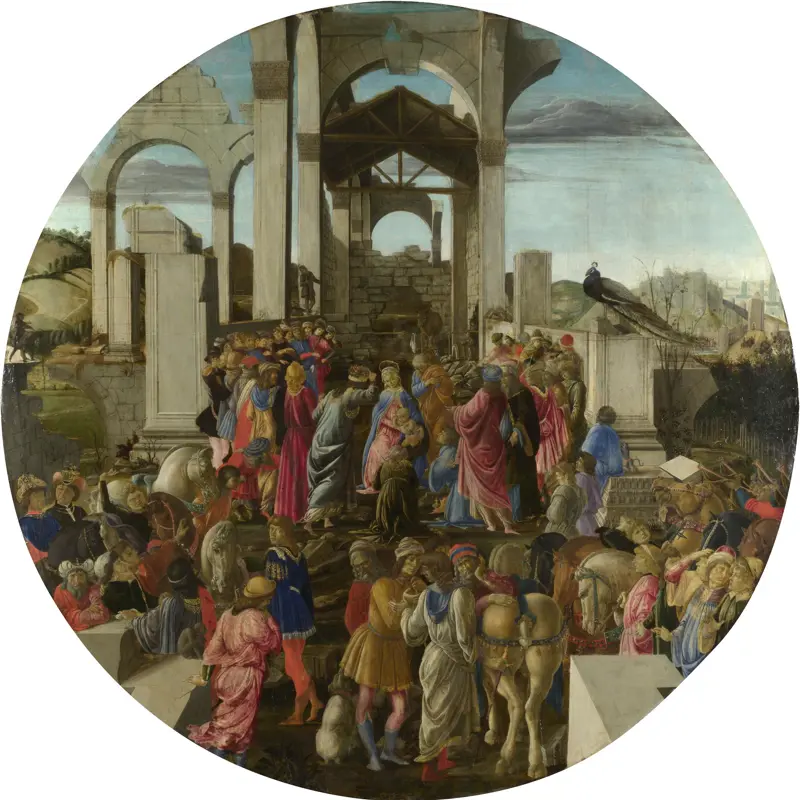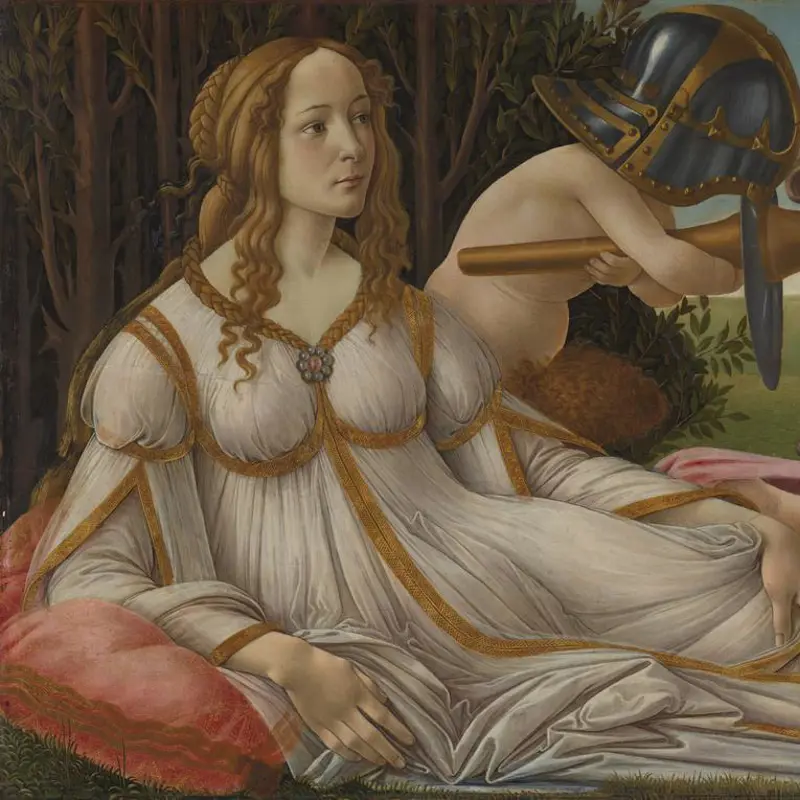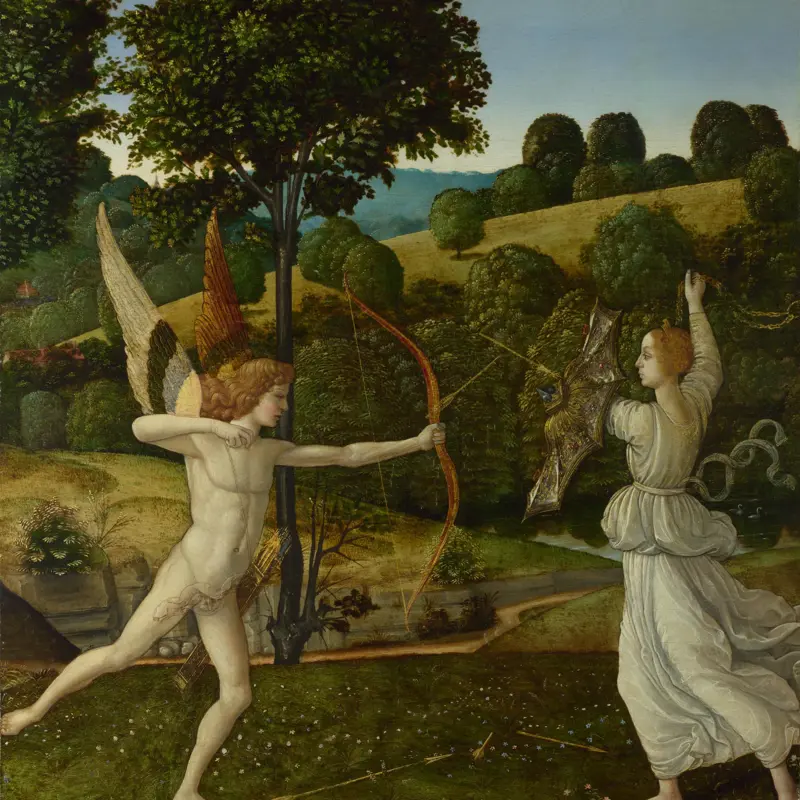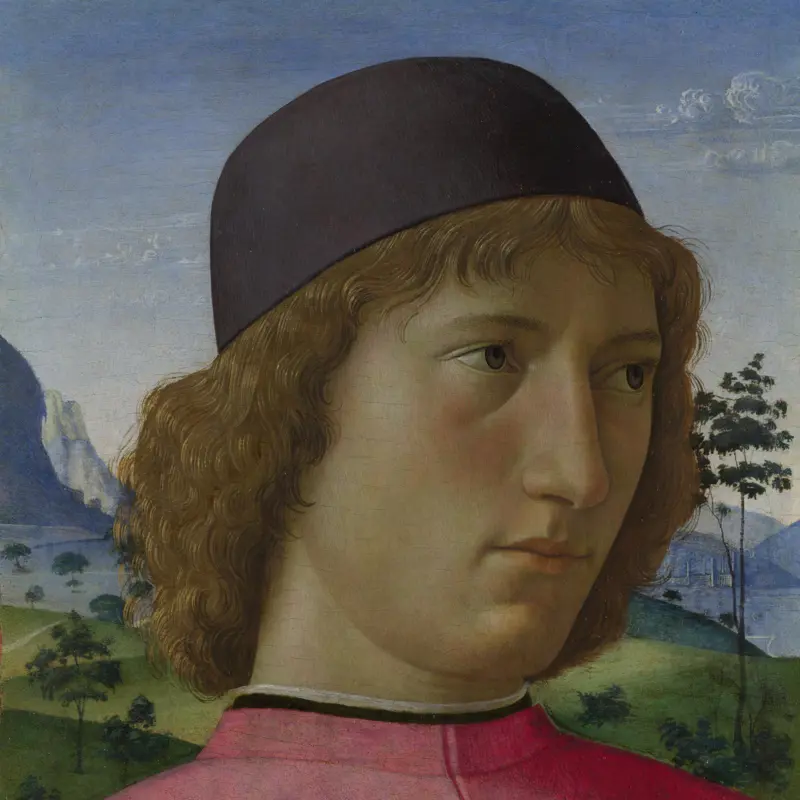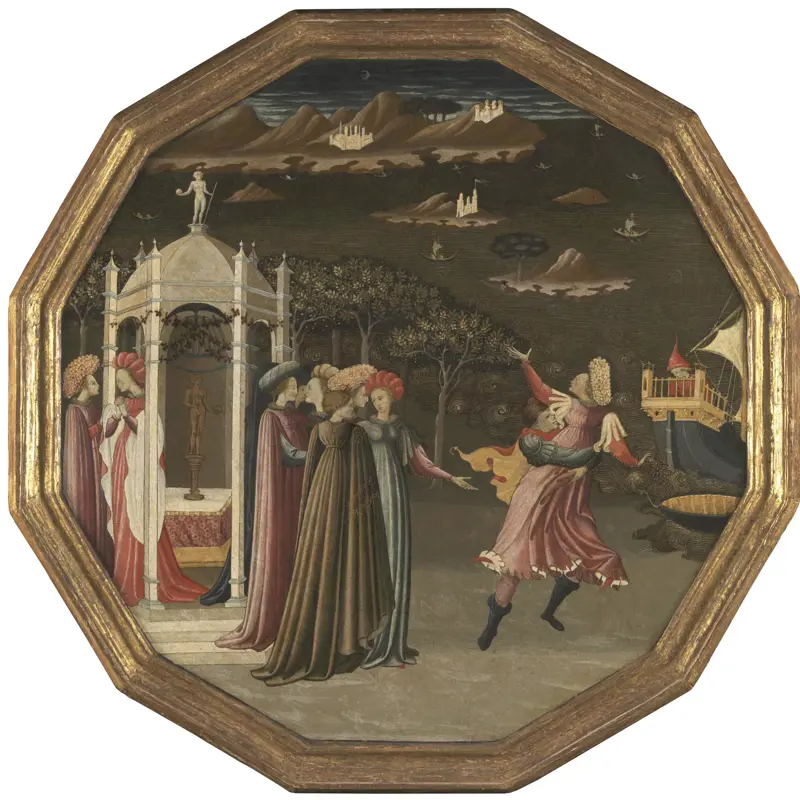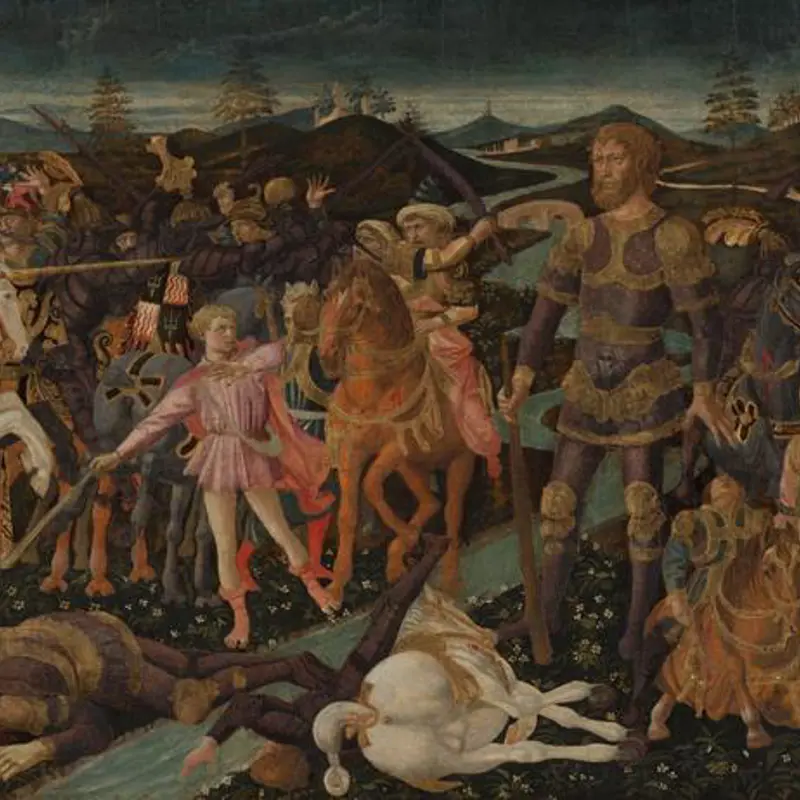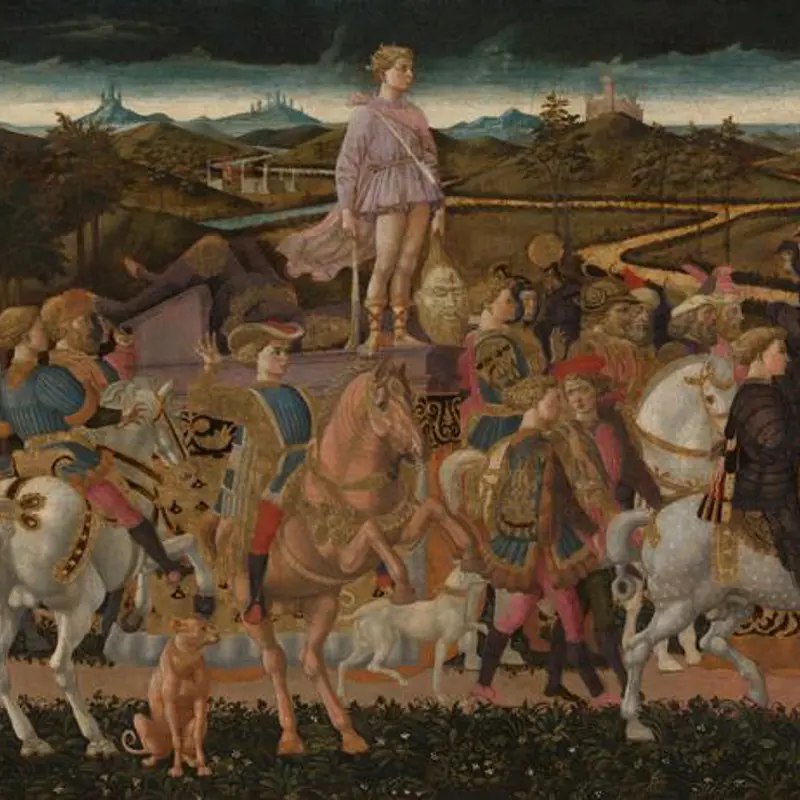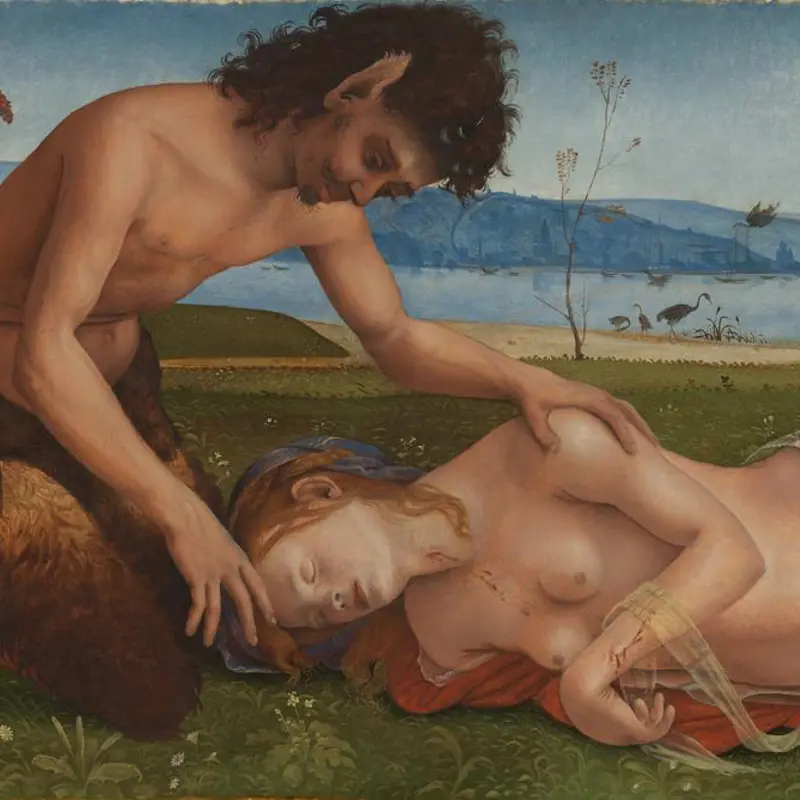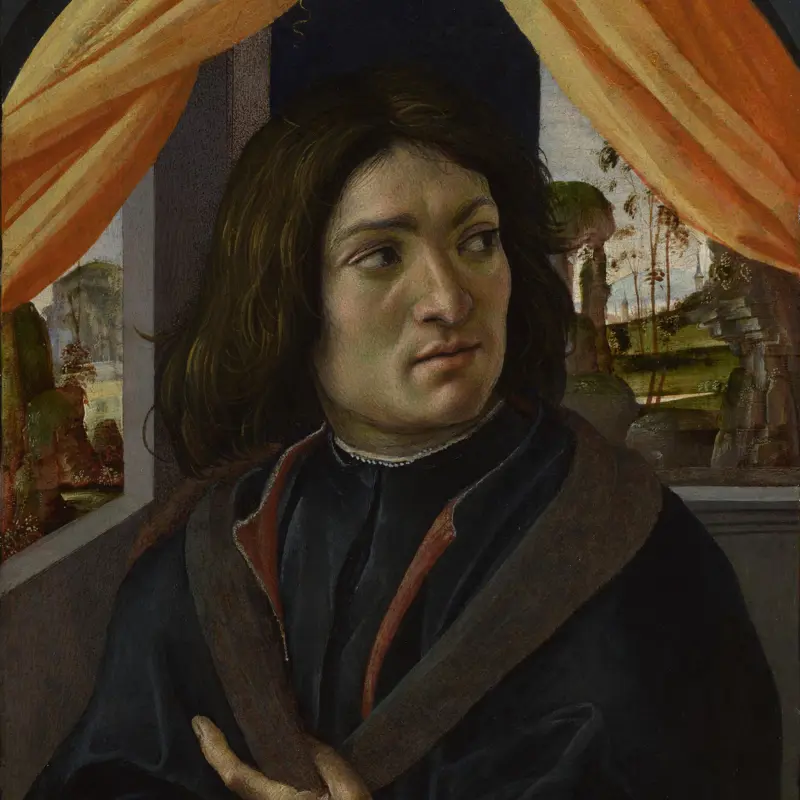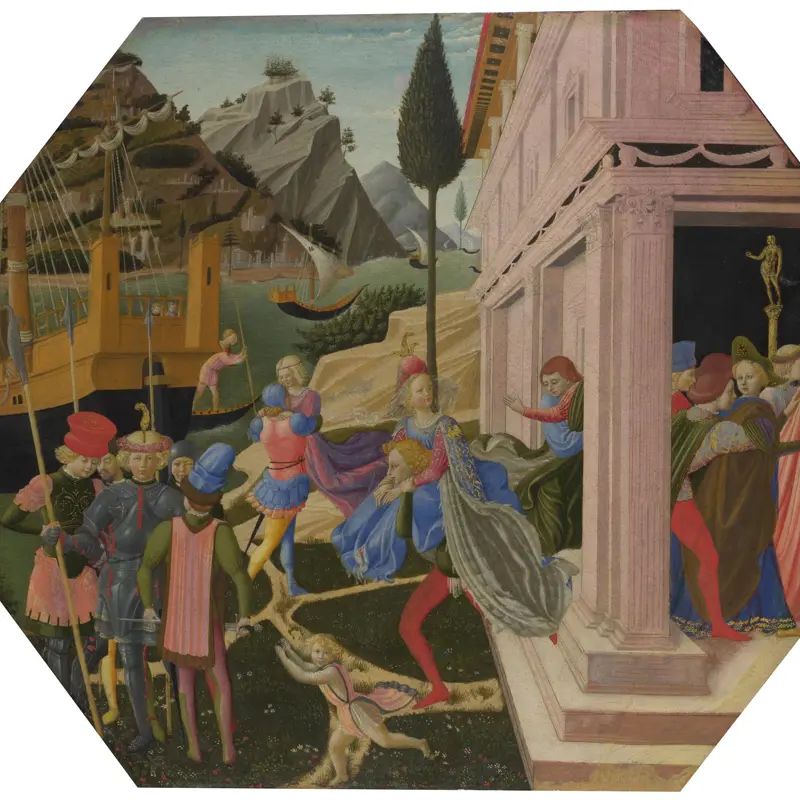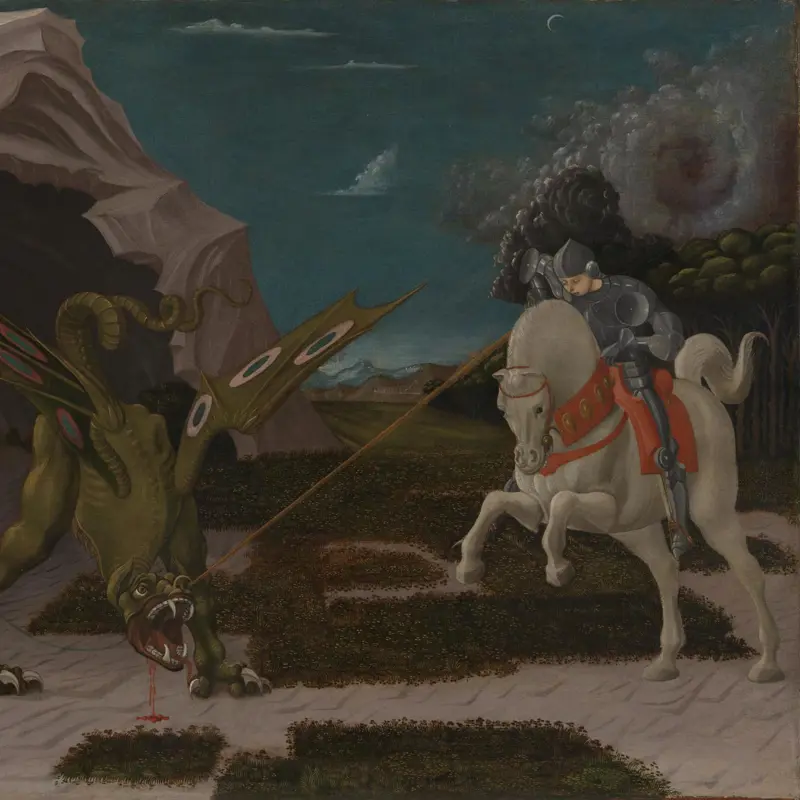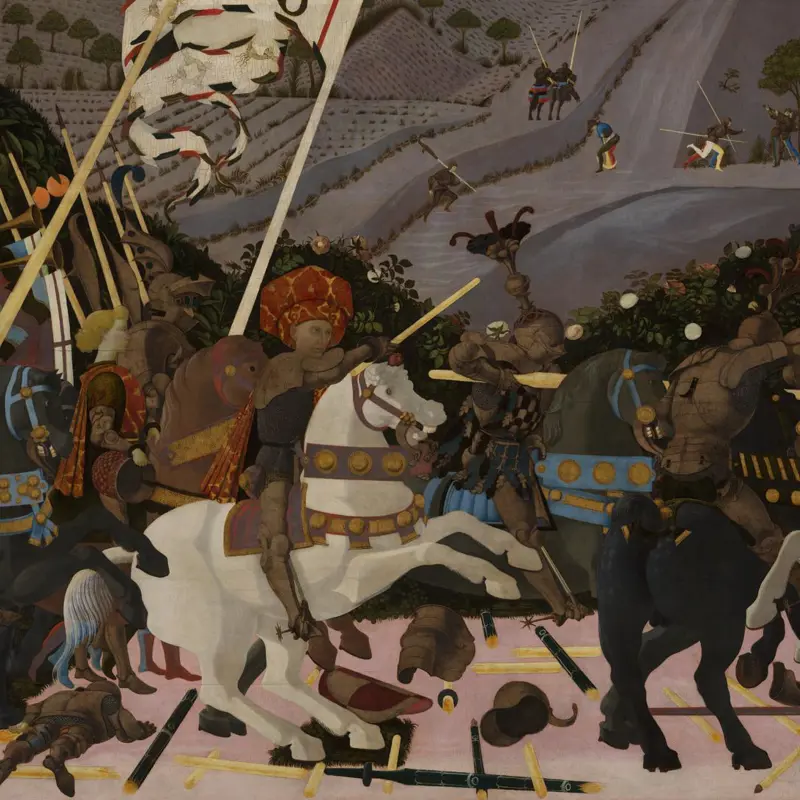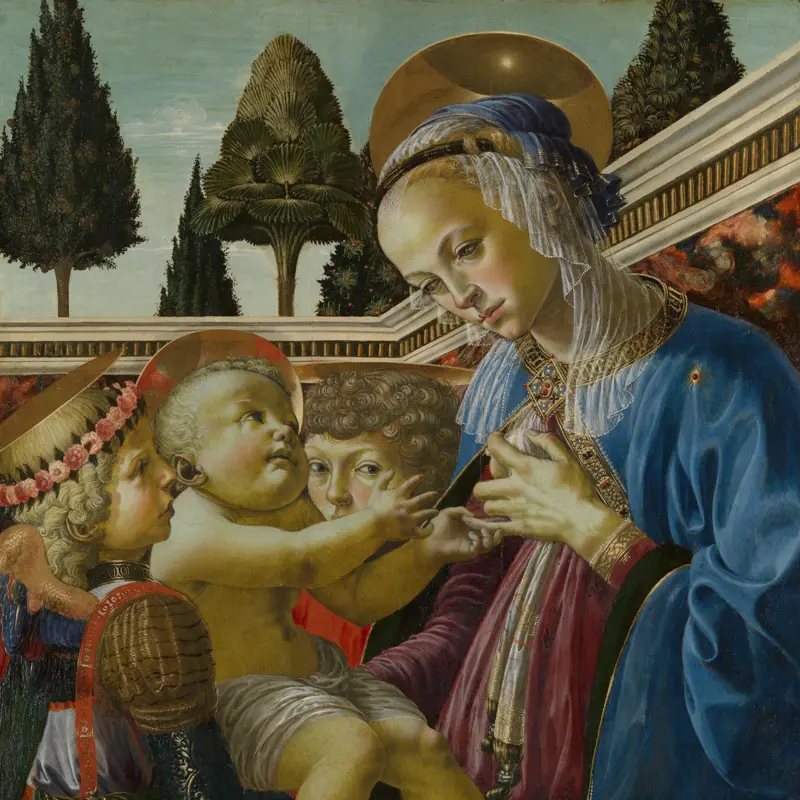During the 15th century, Florence became a 'city of palaces'. Wealthy merchant and banking families expressed their power by building imposing residences to serve as both private homes and centres of business. Uccello’s Battle of San Romano, which celebrated a recent military victory, was part of an ambitious commission for the Bartolini Salimbeni family palace. This coveted set of paintings was later seized by the ruling Medici family and adapted for display in their own magnificent new palazzo.
The horizontal format of other works in this room indicate that they belonged to furnishings in a camera (bedchamber). Pesellino’s Stories of David panels are from cassoni (chests) and those of Botticelli and Piero di Cosimo are spalliere (paintings inserted into panelled walls). Often commissioned to celebrate a marriage, such painted furnishings typically represented ancient or mythological subjects with messages about love and morality.
Devotional images, especially of the Virgin and Child, remained the most vital and frequently occurring works of art in any Christian home. To match the grandeur of the Florentine palazzo interior, these grew in ambition. The tondo, a circular painting typically found in domestic settings, became bigger and more complex in design.


